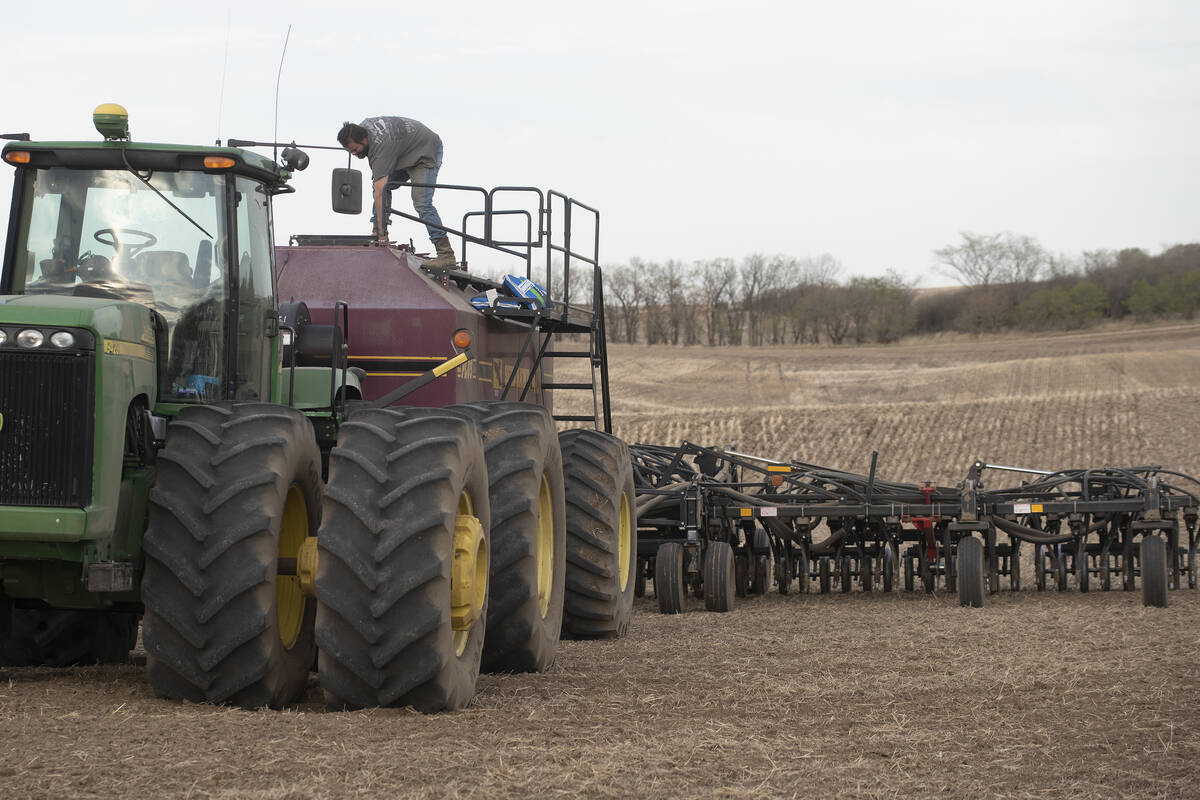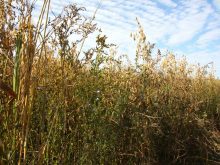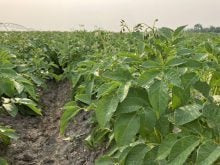Improved water stewardship on potato fields in the Lake Winnipeg basin could provide a surprising amount of community benefits, a recent project showed.
“Those numbers were way bigger than I would ever expect,” said farmer Chad Berry.
Berry, who owns Under the Hill Farms near Cypress River, was one of four farms (covering 34,000 acres) to take part in a water stewardship pilot co-led by J.R. Simplot, Nutrien, BASF, General Mills, ALUS Canada and the Water Council.
Read Also

Nutrien pays farmers for efficient nitrogen
Nutrien’s Sustainable Nitrogen Outcomes (SNO) program pays Prairie farmers to limit nitrogen loss and, therefore, fertilizer-related greenhouse gas emissions.
Potato growers, like those of other crops, have been under pressure to implement sustainability practices.
RELATED: Potato water running short
Farms worked with advisors to develop comprehensive water stewardship plans, according to a Sept. 7 news release from Simplot.
Berry looked at increasing the length of his rotation and adding grasses and cover crops to improve the water-holding capacity of his soil. He also considered how to use water more efficiently through variable-rate irrigation.
“It was a good chance to look at our own farm and reflect on what we’re doing and how we can improve,” he said.
RELATED: Spud growers let soil lie
The farms’ plans included activities in two broad categories, said Brandy Wilson, Simplot’s global sustainability director: working on croplands, which included cover cropping and changing tillage practices; or work on field edges and marginal lands such as adding vegetation buffer strips or supporting wetlands.
The second phase of the project looked to measure the value delivered by current and potential farm practices, Wilson said. That value was expressed in dollars, using the EcoMetrics method that weighs social, environmental and economic costs and benefits.
The study pegged the farmers’ current cropland stewardship practices at a combined value of $558 million. Implementing their planned practices would raise that value to $2.3 billion. Current field edge and marginal land practices were valued at about $409 million, while proposed practices would raise that to nearly $546 million.
“The most value you get really comes from combining some of those cropland stewardship strategies and edge of field and marginal farmlands,” Wilson said.
One takeaway for her personally, she said, was that many suggested cropland practices happen every year and have low up-front costs. The marginal land or field edge projects have much higher upfront costs, “but they deliver a huge return on investment for the community.”
Berry said he expects to spread available water over more acres and to protect water sources, while remaining profitable, through practices involved with the project. He added that he was struck by how many people were affected by management decisions made on his farm.
Now, the team of companies intends to figure out which projects to implement and find funding for them, Wilson said. They may also bring in more farmers and organizations, but that hasn’t been finalized.
















